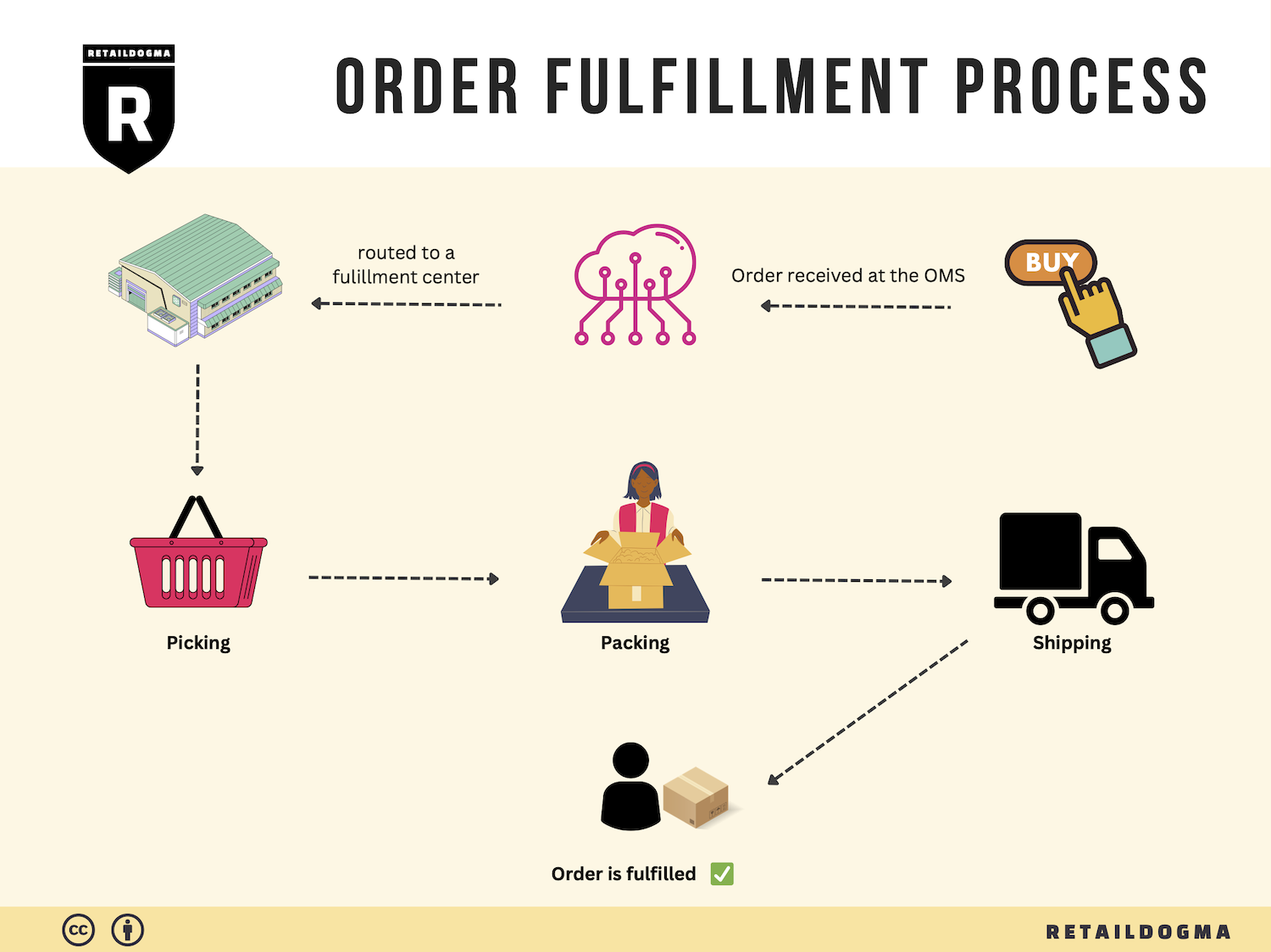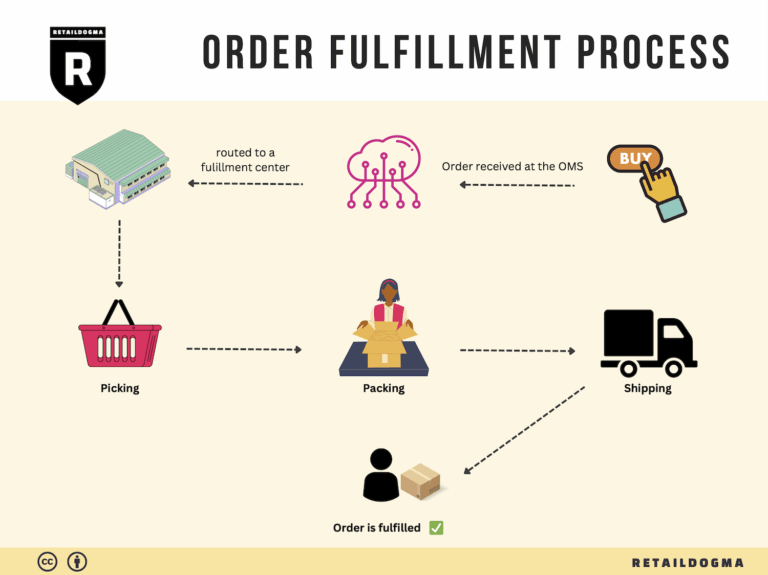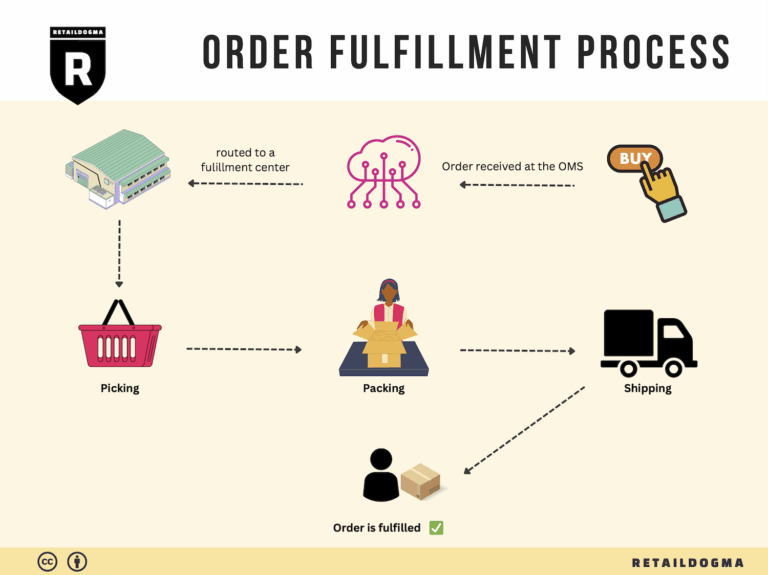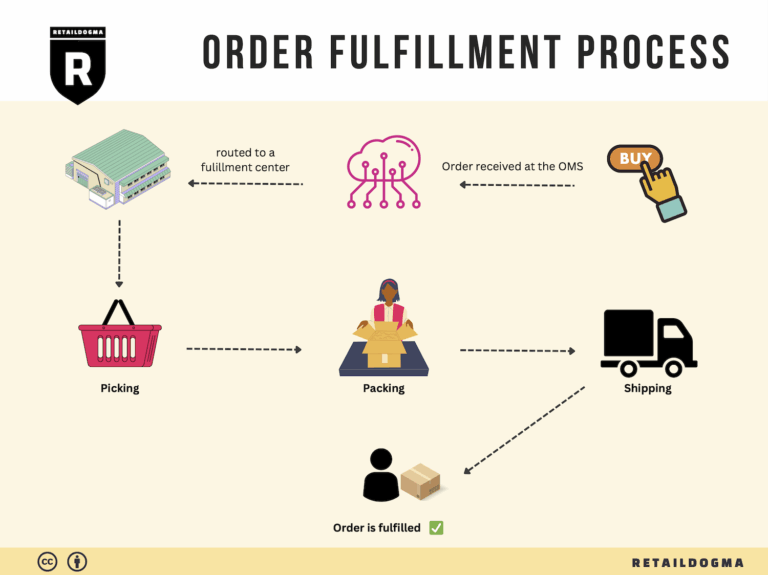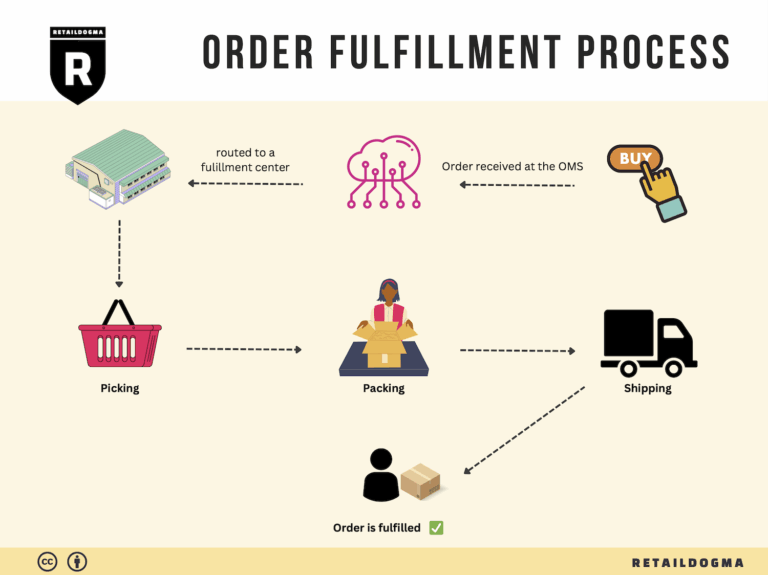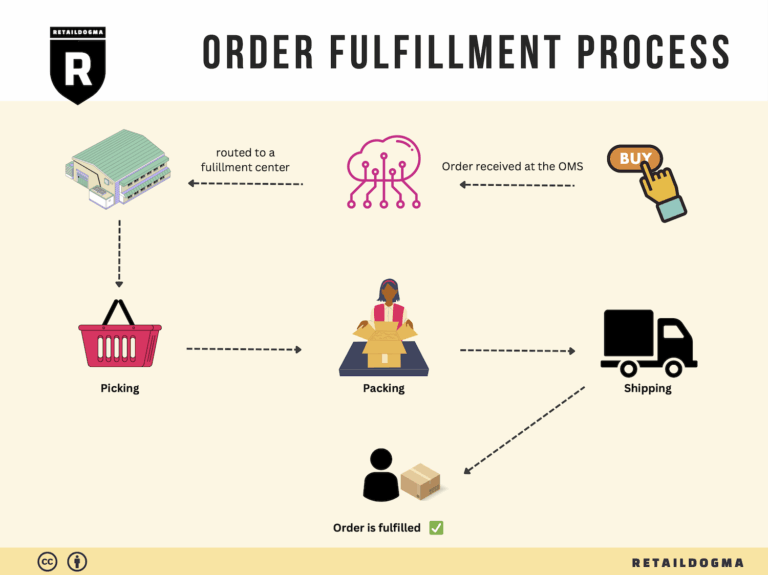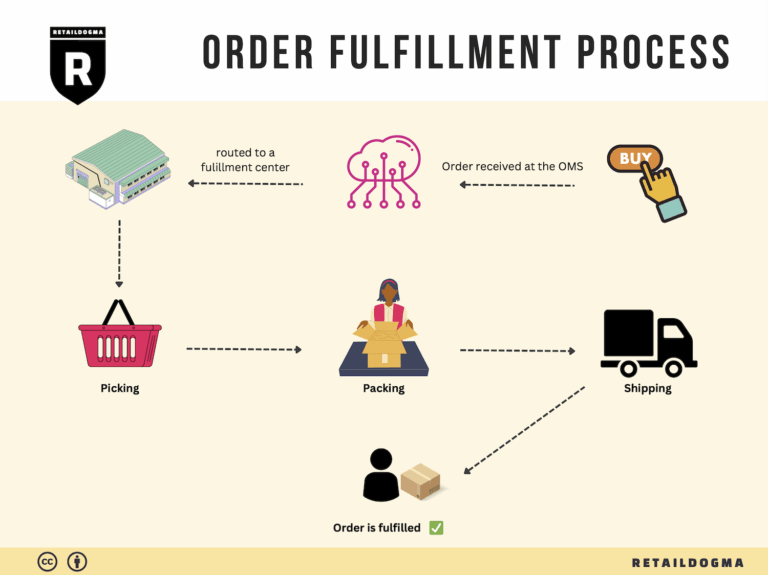Ecommerce Fulfillment Services: The Ultimate Guide (2025)
What is E-commerce Fulfillment? An Introduction for Growing Businesses
Understanding E-commerce Fulfillment
As a growing online business owner, you may have experienced the overwhelming task of packing and shipping orders. The excitement of increased sales can quickly turn into a logistical nightmare if you are not prepared. E-commerce fulfillment is the backbone of your operations, encompassing everything from receiving inventory to delivering products to your customers’ doorsteps. In simpler terms, fulfillment is the process of getting a product to a customer, and it plays a crucial role in ensuring customer satisfaction and repeat business.
In this guide, we will delve into the various aspects of e-commerce fulfillment that can help streamline your operations and scale your business effectively. We will explore different fulfillment models, including Third-Party Logistics (3PL) and Fulfillment by Amazon (FBA), so you can understand which approach aligns best with your business needs. Each model comes with its own set of advantages and challenges, and knowing these will empower you to make informed decisions.
Additionally, we will outline the core services provided by fulfillment centers. This includes inventory management, order processing, shipping, and returns handling. Understanding these services will help you evaluate potential partners and determine what capabilities are essential for your business.
Choosing the right fulfillment partner is a critical decision that can impact your business’s success. We will provide practical tips on how to select a partner that fits your requirements, including factors such as location, technology, customer service, and scalability.
Finally, we will discuss pricing structures associated with fulfillment services. Understanding the costs involved will enable you to budget effectively and avoid unexpected expenses that could hinder your growth.
The goal of this guide is to empower you with the knowledge to make smart decisions about your logistics. By optimizing your fulfillment process, you can focus on what truly matters: growing your business and delighting your customers. With the right strategies in place, fulfillment can transform from a burdensome task into a seamless operation that enhances your customer experience and drives your success.
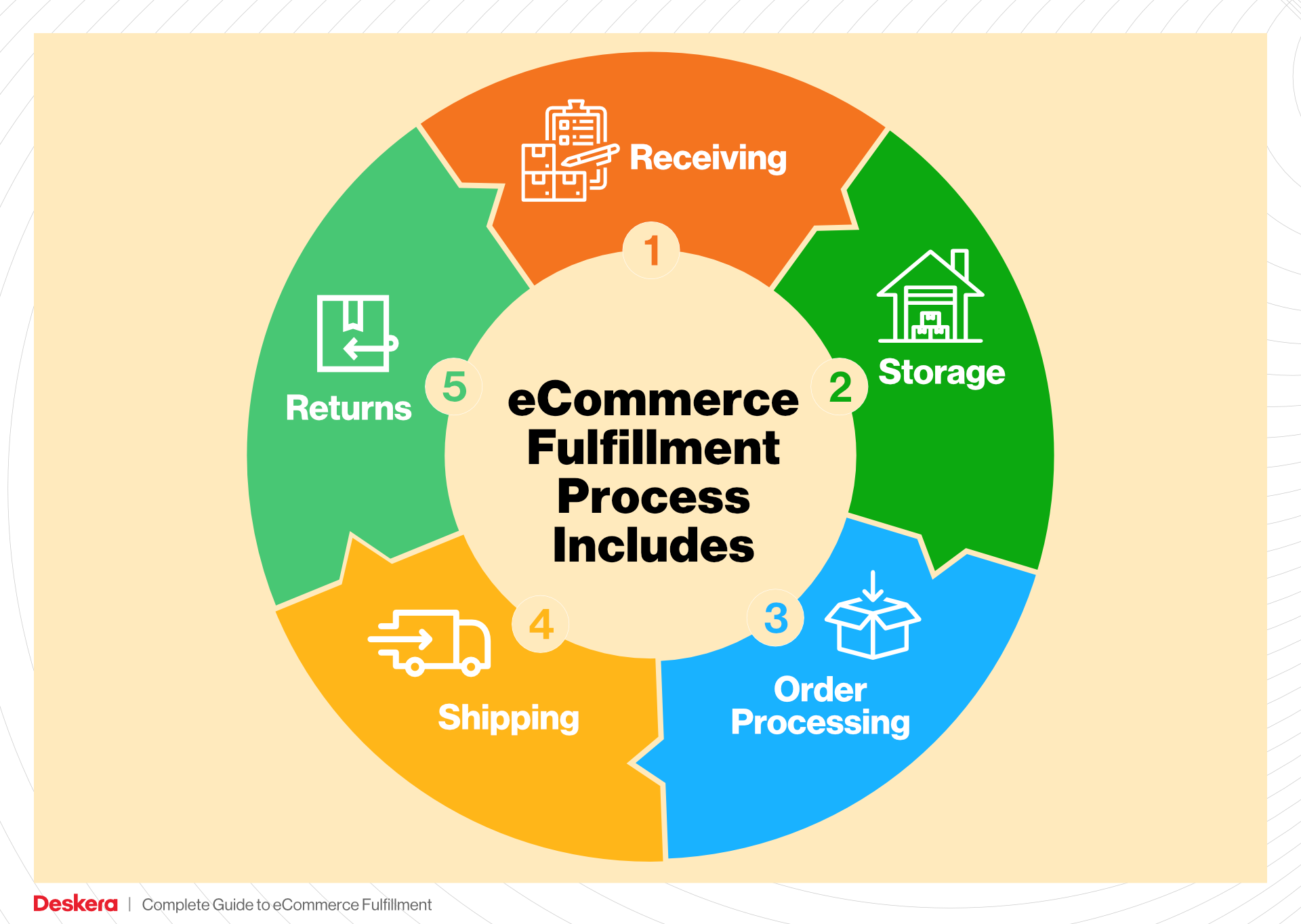
What You’ll Learn In This Guide
- What is E-commerce Fulfillment? An Introduction for Growing Businesses
- The Order Fulfillment Process: From ‘Buy’ Button to Customer’s Door
- Comparing Fulfillment Models: In-House vs. 3PL vs. Dropshipping
- A Deep Dive into Amazon FBA: Pros, Cons, and Who It’s For
- Core Services Offered by Fulfillment Centers
- How to Choose a Fulfillment Partner: A 6-Point Checklist
- Understanding Fulfillment Pricing: A Breakdown of Common Fees
- Frequently Asked Questions (FAQs) about Fulfillment
- Conclusion: Is Outsourcing Fulfillment the Right Move for Your Business?
- Important Disclaimer
The Order Fulfillment Process: From ‘Buy’ Button to Customer’s Door
1. Receiving Inventory
The order fulfillment process begins with receiving inventory, a critical step that sets the foundation for efficient operations. Upon delivery, each shipment is inspected for accuracy against purchase orders and quality standards. This includes verifying the quantity and condition of items, often tracked using Stock Keeping Units (SKUs).
Receiving inventory is vital because discrepancies at this stage can lead to stockouts or overstock situations, both of which can disrupt sales and customer satisfaction. Accurate receiving ensures that your inventory records are up-to-date, enabling better forecasting and planning. A robust inventory management system is essential here to streamline the process, minimize errors, and maintain visibility across your supply chain.
2. Warehouse Storage
Once inventory is received, the next step is warehouse storage. Efficiently organizing products in your warehouse is crucial for optimizing space and improving accessibility. Items are typically stored based on their SKU, size, and demand frequency, with high-demand items placed closer to the packing area for quicker access.
Effective warehouse storage strategies, such as using shelf labeling and bin locations, facilitate faster retrieval during order picking. This step is important because a well-organized warehouse reduces the time employees spend locating items, which directly impacts order fulfillment speed and accuracy. Utilizing warehouse management software can further enhance this process by automating storage assignments and tracking stock levels in real-time.
3. Order Picking
Order picking is the process of selecting items from the warehouse to fulfill customer orders. This step often involves generating pick lists, which detail the items and quantities needed for each order. There are various picking methods, including batch picking (picking multiple orders at once) and wave picking (picking orders based on shipping schedules), each suited for different operational needs.
This step is crucial because it directly affects the accuracy and speed of order fulfillment. Errors during picking can lead to incorrect shipments, resulting in customer dissatisfaction and increased return rates. Implementing technology like barcode scanners or pick-to-light systems can enhance accuracy and efficiency, ensuring that the right items are picked quickly.
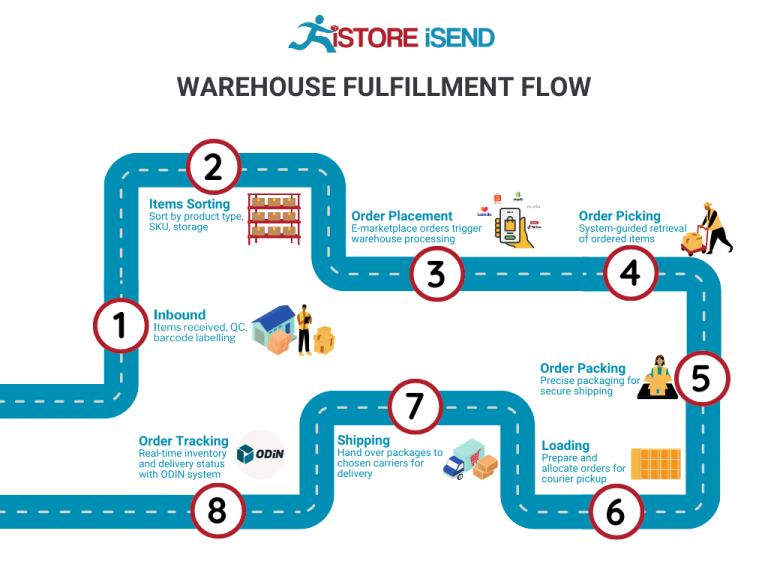
4. Order Packing
After items have been picked, they move to the packing stage, where they are prepared for shipment. This involves checking items against the order for accuracy, packing them securely to prevent damage during transit, and labeling packages with shipping information. Companies often use packing slips and shipping software to streamline this process.
Packing is vital because it affects not only the safety of the products during transit but also the overall customer experience. A well-packed order reflects attention to detail and professionalism, fostering customer trust and repeat business. Additionally, efficient packing processes can reduce shipping costs by optimizing package size and weight, which is essential for maintaining profitability.
5. Shipping & Delivery
The final step in the order fulfillment process is shipping and delivery. Once packed, orders are handed over to carriers for transportation to the customer. This involves selecting appropriate shipping methods based on cost, speed, and destination, with options ranging from standard ground shipping to expedited services.
This step is critical because it impacts delivery times and customer satisfaction. Customers today expect timely deliveries, and delays can lead to dissatisfaction and lost business. Tracking systems should be implemented to provide customers with real-time updates on their orders, enhancing transparency and trust. Additionally, understanding shipping costs and optimizing logistics can significantly reduce expenses and improve overall operational efficiency.
By mastering these five steps—receiving inventory, warehouse storage, order picking, order packing, and shipping & delivery—e-commerce businesses can create a seamless order fulfillment process that enhances customer satisfaction, boosts operational efficiency, and supports scalable growth.
Comparing Fulfillment Models: In-House vs. 3PL vs. Dropshipping
Fulfillment Model Comparison Table
| Model | Who Handles Inventory | Best For (Business Stage) | Key Advantage | Key Disadvantage |
|---|---|---|---|---|
| In-House Fulfillment | Business (Owner/Staff) | Established Businesses | Full control over inventory and processes | High overhead costs |
| Third-Party Logistics (3PL) | Third-party provider | Scaling Businesses | Scalability and expertise | Less control over fulfillment timing |
| Dropshipping | Supplier | Startups and Small Businesses | Low upfront investment | Lower profit margins and longer shipping times |
In-House Fulfillment
In-house fulfillment refers to the process where a business manages its own inventory and shipping operations. This model is particularly suited for established businesses that have already developed a reliable customer base and sufficient sales volume. By handling inventory in-house, companies gain complete control over their logistics, allowing them to manage stock levels, order processing, and shipping methods directly. This can lead to improved customer satisfaction, as businesses can fine-tune their processes based on direct feedback and operational metrics.
However, managing fulfillment in-house comes with significant challenges. The overhead costs can be substantial, as businesses need to invest in warehouse space, staffing, and technology systems for inventory management. Additionally, businesses must stay agile and responsive to changes in demand, which can be difficult without the flexibility that outsourcing offers. This model is best for companies that are well-established and can absorb the higher costs associated with maintaining their own fulfillment operations.
Third-Party Logistics (3PL)
Third-party logistics (3PL) involves outsourcing logistics operations to an external provider. This model is ideal for businesses that are in a growth phase and require scalability without the burden of managing logistics themselves. A 3PL provider offers a range of services, including warehousing, inventory management, order fulfillment, and even transportation. By leveraging the expertise of a 3PL, businesses can streamline their operations and focus on core activities such as marketing and product development.
The key advantage of using a 3PL is the ability to scale operations quickly and efficiently. As sales volume increases, a 3PL can adjust resources and capacity to meet demand without requiring significant upfront investment from the business. However, the downside is the potential loss of control over the fulfillment process. Businesses may face challenges with communication, fulfillment accuracy, and shipping times, which can affect customer satisfaction. Therefore, it is crucial for businesses to choose a reputable 3PL that aligns with their operational goals and customer service standards.
Dropshipping
Dropshipping is a fulfillment model where the retailer does not hold any inventory. Instead, when a customer places an order, the retailer purchases the item from a third-party supplier who ships it directly to the customer. This model is particularly beneficial for startups and small businesses that want to minimize upfront investment and risk. Since there is no need to manage inventory or shipping, entrepreneurs can focus on marketing and customer acquisition.
The primary advantage of dropshipping is the low barrier to entry, allowing new businesses to enter the market without significant capital investment. Additionally, it offers flexibility, as businesses can quickly adapt their product offerings based on market trends without the risk of unsold inventory. However, dropshipping also comes with its challenges. Profit margins are typically lower due to the reliance on suppliers, and shipping times can be longer, especially if products are sourced from overseas. Furthermore, businesses have limited control over inventory levels and fulfillment processes, which can lead to issues with stock availability and delivery timelines.
Conclusion
In summary, choosing the right fulfillment model depends on the stage of your business, your operational goals, and your capacity for managing logistics. In-house fulfillment provides control but comes with high costs, while 3PL offers scalability and expertise at the potential cost of control. Dropshipping is an accessible entry point for new businesses but often results in lower margins and longer delivery times. Understanding these models will help e-commerce businesses like Xero Shoes make informed decisions that align with their growth strategies and customer expectations.

A Deep Dive into Amazon FBA: Pros, Cons, and Who It’s For
Understanding Fulfillment by Amazon (FBA)
Fulfillment by Amazon (FBA) is a service provided by Amazon that enables e-commerce sellers to store their products in Amazon’s fulfillment centers. Amazon takes care of storage, packaging, and shipping of the products directly to customers. Additionally, Amazon handles customer service and returns for these orders. This service allows sellers to leverage Amazon’s vast logistics network and customer base, significantly simplifying the fulfillment process.
How FBA Works
-
Setting Up an FBA Account: Sellers must first create a seller account on Amazon. Once registered, they can opt for FBA by selecting it in their account settings.
-
Sending Inventory to Amazon: Sellers prepare their products according to Amazon’s guidelines and send them to designated fulfillment centers. It’s crucial to adhere to Amazon’s packaging and labeling requirements to avoid delays.
-
Storage and Management: Once products arrive at Amazon’s warehouses, they are stored until sold. Amazon provides inventory management tools that help sellers keep track of stock levels and sales performance.
-
Order Fulfillment: When a customer places an order for a product fulfilled by FBA, Amazon picks, packs, and ships the product directly to the customer. This process typically leverages Amazon’s fast shipping options, such as Prime.
-
Customer Service and Returns: Amazon handles customer inquiries and returns on behalf of the seller, providing a seamless experience for buyers.
Pros of Using FBA
1. Prime Eligibility
One of the most significant advantages of FBA is that it automatically qualifies products for Amazon Prime. This means that sellers can attract more customers who are looking for fast, free shipping, as Prime members often prefer to purchase products that offer these benefits.
2. Enhanced Customer Trust
Amazon is known for its customer service and reliability. By using FBA, sellers can benefit from this established trust. Customers are more likely to purchase items that are fulfilled by Amazon, knowing they will receive their products quickly and that customer service is handled efficiently.
3. Multi-Channel Fulfillment
FBA is not limited to Amazon’s marketplace. Sellers can use FBA to fulfill orders from other sales channels, such as their own websites or other e-commerce platforms. This multi-channel fulfillment capability allows for a unified inventory management system, simplifying logistics across different sales channels.
4. Streamlined Operations
FBA simplifies the logistics process significantly. Sellers can focus on sourcing and marketing their products while Amazon manages storage, shipping, and customer service. This allows for scalability without the need to invest heavily in logistics infrastructure.
5. Access to Amazon’s Customer Base
By using FBA, sellers gain access to Amazon’s vast customer base, which can lead to increased visibility and sales. Products fulfilled by Amazon often receive better placement in search results, enhancing the chances of being discovered by potential buyers.
Cons of Using FBA
1. High Fees
While FBA can simplify logistics, it comes at a cost. Amazon charges various fees for storage and fulfillment, which can eat into profit margins. Sellers need to carefully analyze these costs to ensure they are still profitable after FBA fees are deducted.
2. Strict Inventory Rules
Sellers must adhere to Amazon’s strict inventory management policies. This includes guidelines on product preparation, labeling, and storage limits. Failure to comply can result in additional fees or even account suspension.
3. Commingling Risks
FBA uses a commingling system, meaning that products from different sellers can be stored together. This poses a risk if another seller’s product is defective or misrepresented, potentially leading to negative reviews or returns that can impact your seller performance metrics.
4. Inventory Management Challenges
While Amazon provides tools for inventory management, sellers must still keep a close eye on stock levels. Overestimating demand can lead to excess storage fees, while underestimating can result in stockouts and lost sales.
5. Limited Control Over Branding
When using FBA, sellers have limited control over the packaging and branding of their products. Amazon’s branding is front and center, which may dilute a seller’s brand identity and recognition among customers.
Who is FBA Best For?
FBA is particularly beneficial for small to medium-sized businesses that are looking to scale their operations without the burden of managing logistics. It is ideal for:
-
Entrepreneurs with Limited Resources: Those who do not have the infrastructure or resources to handle shipping and customer service can greatly benefit from FBA.
-
Sellers with High Sales Volumes: Businesses that anticipate high sales volumes can leverage FBA’s capabilities to meet demand efficiently.
-
Companies Seeking to Expand Reach: Brands looking to tap into Amazon’s vast customer base and increase their visibility will find FBA a powerful tool for growth.
-
Multi-Channel Sellers: Businesses that sell on multiple platforms and want to streamline their fulfillment process can benefit from FBA’s multi-channel fulfillment options.
In conclusion, while FBA offers numerous advantages such as Prime eligibility, customer trust, and operational efficiency, it also comes with challenges, including high fees and strict inventory policies. By weighing these pros and cons, businesses can determine if FBA aligns with their growth strategies and operational capabilities.
Core Services Offered by Fulfillment Centers
Inventory Management & Warehousing
Inventory management and warehousing are fundamental services provided by fulfillment centers, crucial for any e-commerce business looking to scale operations efficiently. This service involves the systematic tracking and storage of products, ensuring that the right amount of inventory is available to meet customer demand without overstocking or stockouts.
Benefits:
1. Optimized Stock Levels: Effective inventory management allows businesses to maintain optimal stock levels. This minimizes holding costs and reduces the risk of obsolete inventory, which can occur if products remain unsold for too long.
2. Real-Time Tracking: Fulfillment centers utilize advanced software systems that provide real-time visibility into inventory levels. This information helps businesses make informed decisions regarding restocking and purchasing.
3. Space Efficiency: By leveraging the warehousing capabilities of fulfillment centers, e-commerce businesses can optimize their storage space. This is particularly beneficial for those operating from home or small offices, as it allows them to scale without the need for significant physical infrastructure investment.
4. Reduced Lead Times: With strategically located warehouses, fulfillment centers can ensure faster shipping times to customers, enhancing satisfaction and driving repeat business.
Pick and Pack Services
Pick and pack services are essential for e-commerce fulfillment, involving the selection (picking) of products from inventory and packing them for shipment. This process is executed efficiently to ensure that orders are fulfilled accurately and promptly.
Benefits:
1. Accuracy and Efficiency: Fulfillment centers employ sophisticated picking systems, often using barcodes and automated tools to reduce human error. This ensures that customers receive the correct products, enhancing their overall experience.
2. Scalability: As order volumes fluctuate, fulfillment centers can quickly adjust their pick and pack operations to meet changing demands, allowing businesses to scale up during peak seasons without compromising service quality.
3. Time Savings: By outsourcing pick and pack services, e-commerce businesses can focus on core activities such as marketing and product development, leaving the logistics to experts who can handle the complexity more effectively.
4. Customized Packaging: Fulfillment centers often offer customization options for packaging, which can enhance branding efforts. This can include branded boxes, inserts, or special wrapping that can leave a lasting impression on customers.
Kitting and Assembly
Kitting and assembly services involve the grouping of individual items into ready-to-ship sets or the assembly of products that require multiple components. This service is particularly valuable for businesses that sell products requiring assembly or bundling before shipping.
Benefits:
1. Increased Product Appeal: Kitting can enhance product offerings by allowing businesses to create bundles that appeal to customers, such as a complete outfit or a starter kit. This can increase average order values and customer satisfaction.
2. Streamlined Processes: By outsourcing kitting and assembly to a fulfillment center, businesses can streamline their operations. This reduces the need for in-house labor and can lead to significant cost savings.
3. Improved Inventory Management: Kitting helps in better inventory management by allowing businesses to track bundled items as single units. This can simplify inventory counts and reporting.
4. Faster Order Processing: With products pre-assembled or bundled, fulfillment centers can process orders more quickly. This leads to shorter fulfillment times, which is critical in meeting customer expectations for rapid delivery.
Returns Management (Reverse Logistics)
Returns management, or reverse logistics, is a critical service offered by fulfillment centers that deals with the processing of returned merchandise. This includes receiving, inspecting, restocking, or disposing of returned items. Efficient returns management can significantly impact customer satisfaction and overall business performance.
Benefits:
1. Enhanced Customer Experience: A streamlined returns process is essential for customer satisfaction. When customers know they can return products easily, they are more likely to make purchases, reducing the barrier to buying.
2. Cost Reduction: Fulfillment centers can manage returns more cost-effectively than individual businesses by consolidating processes and utilizing established protocols for handling returns.
3. Data Insights: Returns management provides valuable data on customer preferences and product performance. Analyzing return reasons can help businesses improve their offerings and reduce future returns.
4. Inventory Control: Efficient returns processing allows for quick restocking of items that can be resold, thereby minimizing the financial impact of returns on inventory levels. This ensures that inventory remains healthy and ready for resale.
In conclusion, utilizing a fulfillment center for these core services can significantly enhance the operational efficiency of an e-commerce business. By outsourcing inventory management, pick and pack, kitting, and returns management, businesses can focus on growth and customer engagement while ensuring that logistics are handled by experts. This strategic partnership can lead to improved customer satisfaction, reduced operational costs, and ultimately, increased profitability.
How to Choose a Fulfillment Partner: A 6-Point Checklist
Location & Warehouse Network
The geographical location of a fulfillment partner’s warehouses is one of the most critical factors influencing shipping costs and delivery times. A strategically positioned warehouse can significantly enhance your customer experience by reducing shipping times and costs, especially for e-commerce businesses like Xero Shoes that may target a nationwide or global market.
Questions to Ask:
– Where are your warehouses located, and how does that align with our target market?
– What is your average shipping time to key regions where we have significant sales?
– Do you have a network of warehouses that allows for distributed inventory management?
Technology & Integrations
In today’s digital-first world, the technology used by your fulfillment partner can make or break your operational efficiency. A partner with robust technology solutions will offer seamless integrations with your existing e-commerce platforms, allowing for real-time inventory tracking, order processing, and customer communications.
Questions to Ask:
– What software do you use for inventory management and order processing?
– Can your system integrate with our current e-commerce platform (e.g., Shopify, WooCommerce)?
– Do you offer real-time tracking for orders, and how can customers access this information?
Specializations
Not all fulfillment partners are equipped to handle every type of product. Depending on your offerings, you may need a partner with specializations, such as cold storage for perishable goods or the ability to handle oversized items like footwear. Understanding these capabilities is essential to ensure your products are stored and shipped correctly.
Questions to Ask:
– Do you have experience handling products similar to ours (e.g., shoes, clothing)?
– What special services do you offer (e.g., cold storage, kitting, or assembly)?
– Can you accommodate unique packaging requirements for our products?
Scalability & Capacity
As your business grows, your fulfillment needs will evolve. A good fulfillment partner should not only meet your current requirements but also have the ability to scale operations seamlessly as your order volume increases. This includes both physical capacity in their warehouses and the flexibility of their systems to handle fluctuating demand.
Questions to Ask:
– What is your current capacity, and how quickly can you scale up operations if our sales increase?
– Have you managed seasonal spikes in demand, and how did you handle them?
– What contingency plans do you have in place for unexpected surges in order volume?
Pricing and Contracts
Understanding the pricing structure and contract terms is crucial to avoid unexpected costs that can eat into your margins. A transparent pricing model helps you budget effectively, while flexible contract terms can provide the agility needed for growth.
Questions to Ask:
– What is your pricing structure (e.g., per order, flat-rate, tiered pricing)?
– Are there any hidden fees we should be aware of (e.g., storage fees, shipping surcharges)?
– What are the terms for contract renewal or termination? Are there penalties for early termination?
Customer Support & Reviews
The quality of customer support offered by your fulfillment partner can significantly impact your operations. Responsive support is vital for resolving issues quickly, whether they are related to shipping delays, inventory discrepancies, or customer inquiries. Additionally, researching reviews can provide insights into the partner’s reliability and service quality.
Questions to Ask:
– What customer support channels do you offer (e.g., phone, email, chat), and what are your response times?
– Can you provide case studies or references from current clients in our industry?
– How do you handle customer complaints or issues, and what is your escalation process?
Conclusion
Choosing the right fulfillment partner is a pivotal decision for scaling your e-commerce business. By thoroughly evaluating potential partners using this checklist, you can ensure that your logistics operations align with your business goals, enhance customer satisfaction, and support sustainable growth. Always remember, the right partnership can lead to improved operational efficiency, reduced costs, and ultimately, a better customer experience.
Understanding Fulfillment Pricing: A Breakdown of Common Fees
Initial Setup Fees
Initial setup fees are often the first financial consideration when partnering with a fulfillment center. These fees cover the costs associated with onboarding your business, which may include integrating your e-commerce platform with the fulfillment center’s system, setting up inventory management protocols, and establishing your specific service requirements.
The calculation of initial setup fees can vary significantly based on the complexity of your operations and the fulfillment center’s pricing structure. Typically, you might expect a one-time fee ranging from $200 to $1,500, depending on the services you require. It’s important to clarify what services are included in this fee and ensure that you’re aware of any additional charges that might arise during the setup process.
Receiving Fees
Receiving fees are charged when your products arrive at the fulfillment center. This fee typically covers the labor and resources needed to unload, inspect, and process your inventory.
Receiving fees can be calculated in several ways:
– Per Pallet or Box: Some fulfillment centers charge a flat fee for each pallet or box received, which could range from $20 to $50 per pallet.
– Hourly Rate: Others may charge an hourly rate for the labor involved in receiving your goods, which could be $50 to $100 per hour, depending on the complexity and volume of the shipment.
Understanding how receiving fees are structured is crucial, especially if your inventory fluctuates in size or if you frequently receive large shipments.
Storage Fees (per pallet/bin)
Storage fees are an ongoing cost associated with keeping your inventory at a fulfillment center. These fees are typically assessed monthly and can vary based on the amount of space your products occupy.
Storage fees can be calculated in several ways:
– Per Pallet: Many fulfillment centers charge a flat fee per pallet stored, usually ranging from $15 to $50 per month. This is beneficial for businesses with larger products that take up more space.
– Per Bin or Shelf: For smaller items, some centers charge per bin or shelf space, which can be calculated at a lower rate, often $5 to $20 per month.
It’s essential to monitor your inventory turnover rates to minimize storage costs, as prolonged storage can significantly impact your overall fulfillment expenses.
Pick & Pack Fees (per item/order)
Pick and pack fees are charged for the labor involved in retrieving items from storage and packaging them for shipment. This is a critical part of the fulfillment process and can vary based on several factors, including the complexity of the order and the number of items.
Pick and pack fees are typically calculated as follows:
– Per Item: Some fulfillment centers charge a fee for each item picked and packed, which might range from $0.50 to $3.00 per item.
– Per Order: Others may charge a flat fee per order, regardless of the number of items included, typically between $1.00 and $5.00.
Understanding the pick and pack structure will help you forecast costs based on your sales volume and order complexity.
Shipping Fees
Shipping fees are the costs associated with delivering your products to customers. These fees can vary widely based on the shipping method chosen, the destination, and the weight of the package.
Shipping fees can be calculated in several ways:
– Flat Rate: Some fulfillment centers offer flat-rate shipping, which simplifies budgeting. For example, a flat rate might be $4.99 for the first item and $2.99 for each additional item.
– Weight-Based: Many centers charge based on the weight and dimensions of the package, which can be calculated using carrier rates (e.g., USPS, UPS).
Additionally, consider any extra fees for expedited shipping or special handling, as these can add up quickly.
Conclusion: Tips for Getting an Accurate Quote
To obtain an accurate quote for fulfillment services, consider the following tips:
-
Provide Detailed Information: Clearly outline your product types, average order sizes, and expected order volumes. The more information you provide, the more tailored the quote will be.
-
Ask for a Breakdown: Request a detailed breakdown of all potential fees, including any hidden or variable costs. This will help you understand the full scope of your expenses.
-
Negotiate Terms: Don’t hesitate to negotiate terms, especially if you expect to scale your business rapidly. Many fulfillment centers are open to adjusting fees based on projected volumes.
-
Compare Multiple Fulfillment Centers: Gather quotes from several fulfillment centers to compare pricing structures and service offerings, ensuring you choose the best fit for your business needs.
-
Review Contract Terms: Before signing any agreements, carefully review the contract terms, especially concerning potential increases in fees as your business scales.
By understanding these common fulfillment pricing models, you can make informed decisions that align with your business goals and budget.
Frequently Asked Questions (FAQs) about Fulfillment
1. What is a fulfillment center?
A fulfillment center is a specialized facility designed to store products and manage the logistics of order processing, packing, and shipping. Unlike traditional warehouses, fulfillment centers focus on quickly and efficiently delivering products directly to customers, often using advanced technology and systems to streamline operations.
2. How does Xero Shoes’ fulfillment process work?
Xero Shoes aims to ship orders within one business day of receiving them. Once an order is placed, it is processed in the fulfillment center, where items are picked, packed, and shipped. Customers receive tracking information to monitor their shipment. During peak times, such as sales or new product launches, shipping may take longer.
3. What is the difference between a warehouse and a fulfillment center?
While both warehouses and fulfillment centers store products, a warehouse primarily focuses on inventory storage and management. In contrast, a fulfillment center is geared towards order processing and shipping directly to customers. Fulfillment centers often offer additional services like inventory management, order tracking, and returns processing.
4. What is a 3PL (Third-Party Logistics)?
A 3PL provider is an external company that manages logistics operations for businesses, including warehousing, fulfillment, shipping, and sometimes even customer service. By outsourcing these functions to a 3PL, businesses can focus on their core competencies while leveraging the expertise and infrastructure of the logistics provider.
5. How much do fulfillment services cost?
Fulfillment costs can vary widely based on factors such as storage space, order volume, shipping methods, and additional services offered. Typically, businesses can expect to pay for storage fees (per pallet or cubic foot), picking and packing fees (per order), and shipping costs. It’s essential to evaluate multiple fulfillment providers to find a service that aligns with your budget and operational needs.
6. What shipping options does Xero Shoes offer?
Xero Shoes provides various shipping options, including flat-rate shipping and expedited services. Standard shipping is free for orders over $99 within the contiguous U.S. Additional shipping options are available for faster delivery, and tracking is included with all domestic shipments.
7. How can I track my order from Xero Shoes?
After placing an order, you will receive an email confirmation that includes tracking information once your order has shipped. You can use this tracking number on the carrier’s website to monitor the status of your shipment.
8. What should I do if my order is delayed?
If your order is delayed, check the tracking information provided in your confirmation email. During peak times, delays may occur due to high order volumes. If the delay exceeds the estimated delivery window, you can contact Xero Shoes’ customer service for further assistance.
9. Can I change or cancel my order after it has been placed?
Once an order is placed, changes or cancellations may be limited due to the fast processing time. However, if you need to make adjustments, it’s best to contact customer service immediately after placing your order. They will do their best to accommodate your request before the order is shipped.
10. What is the return policy for Xero Shoes?
Xero Shoes offers a flexible return policy. Customers can return unworn and undamaged items within a specified period for a full refund. It’s important to retain the original packaging and follow the return instructions provided on their website to ensure a smooth return process.
Conclusion: Is Outsourcing Fulfillment the Right Move for Your Business?
Evaluating the Benefits of Outsourcing Fulfillment
Outsourcing fulfillment can be a transformative strategy for e-commerce businesses looking to scale efficiently. One of the most significant advantages is time savings. By delegating warehousing, packing, and shipping to a fulfillment partner, business owners can redirect their focus to core activities like product development, marketing, and customer engagement. This shift not only enhances productivity but also fosters innovation, allowing businesses to adapt and grow in a competitive landscape.
Scalability is another critical benefit. As your business experiences fluctuations in order volume—whether due to seasonal demand, promotional campaigns, or new product launches—an established fulfillment service can seamlessly accommodate these changes. This flexibility ensures that your operations remain smooth without the need for costly investments in additional infrastructure or staff.
Moreover, partnering with a fulfillment expert brings invaluable industry knowledge and technology. These providers often have access to advanced logistics solutions, efficient shipping methods, and insights into best practices that can optimize your supply chain. Their expertise can help mitigate common pitfalls, ensuring that your customers receive their orders promptly and in excellent condition, which is essential for maintaining high satisfaction rates.
However, the success of outsourcing fulfillment hinges on selecting the right partner. It is crucial to conduct thorough research, evaluate potential partners based on their track record, technology capabilities, and alignment with your business goals.
As a strategic next step, consider auditing your current shipping and fulfillment processes. Analyze your operational pain points and growth ambitions to determine if a fulfillment partner could enhance your efficiency and customer experience. Taking this proactive approach can position your business for sustainable growth and success in the evolving e-commerce landscape.
Important Disclaimer
⚠️ Important Disclaimer
The information in this guide is for educational purposes. Fulfillment services, pricing, and platform features change frequently. Always conduct your own due diligence and consult with providers directly before making business decisions.
